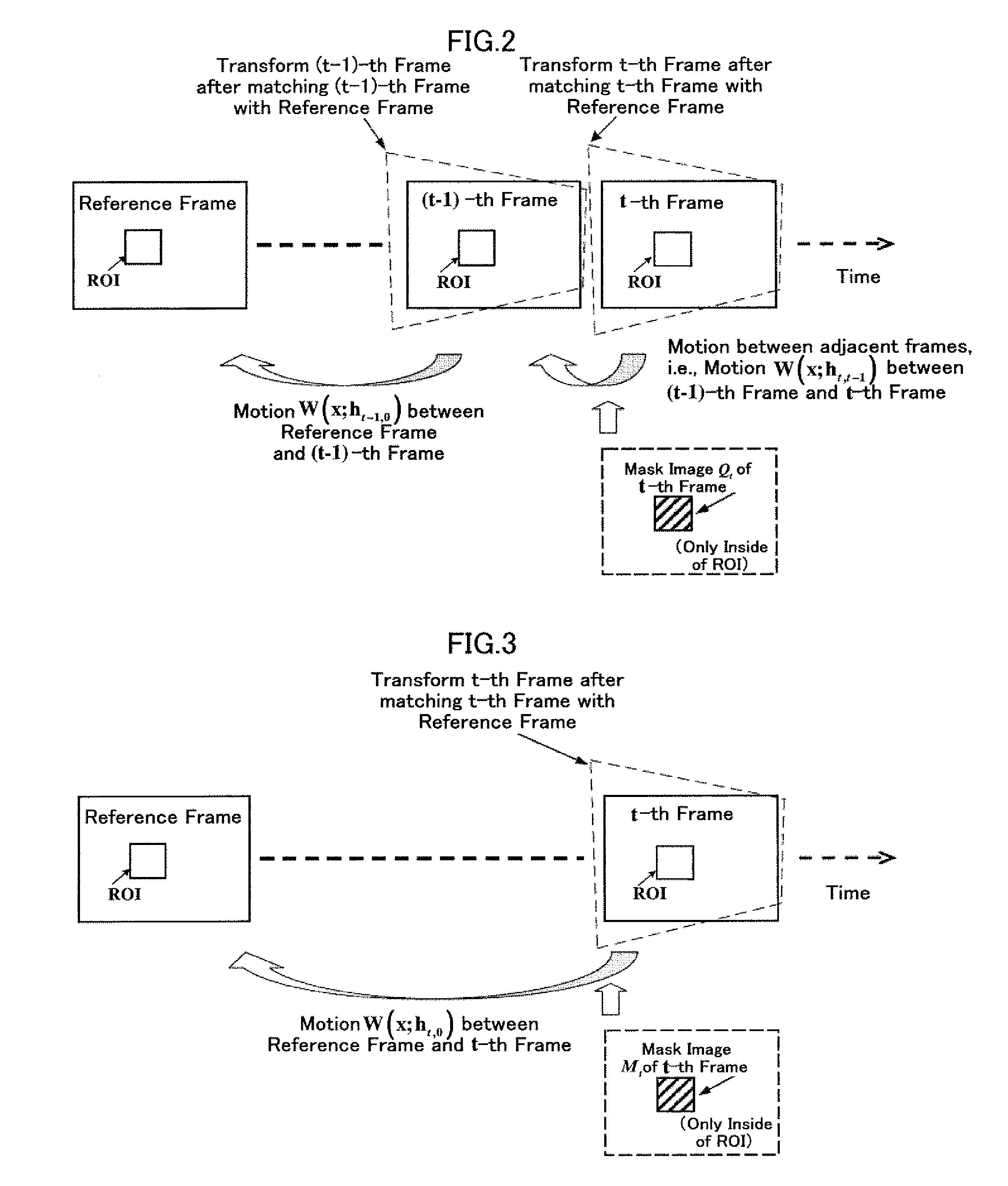Image registration method
a registration method and image technology, applied in the field of image registration methods, can solve the problems of occlusion, failure to estimate the motion parameter, and registration failure, and achieve the effect of robustness to illumination variation and occlusion
- Summary
- Abstract
- Description
- Claims
- Application Information
AI Technical Summary
Benefits of technology
Problems solved by technology
Method used
Image
Examples
experiment 2 (
A Robust Tracking Experiment of an Object Having Nonplanar Geometry)
[0109]In Experiment 2, the tracking object is a globe whose diameter is about 14 cm, and an image sequence which consists of 300 frames that captured the globe turned slowly by hand by right and left, is used. In Experiment 2 the size of ROI is 100 [pixel]×100 [pixel].
[0110]Through Experiment 2, we confirmed that even if the tracking object has nonplanar geometry, the robust tracking is possible by the region selection two step registration method of the present invention.
[0111]FIG. 7 shows the registration results of Experiment 2. As shown in FIG. 7, the registration results for some images (i.e. the first frame, the 104th frame, the 187th frame, and the 283rd frame) of the image sequence used in Experiment 2 are shown.
[0112]Specifically, FIG. 7(A) shows the tracking result of ROT that is set on the reference image (the first frame which is a beginning frame). Then FIG. 7(B) shows the images that are obtained by pl...
experiment 3 (
A Robust Tracking Experiment of a Face)
[0116]In Experiment 3, the tracking object is a person's face that is captured in the room, and since the direction of the face is changed under the fixed room illumination, the illumination variation exists. Furthermore, in Experiment 3, not only the face is a nonplane but also the geometry slightly changes. In Experiment 3, an image sequence which consists of 600 frames that captured the face is used, and the size of ROI is 90[pixel]×100[pixel].
[0117]Through Experiment 3, we confirmed that even if the tracking object is an object which is not usually used by the conventional region-based registration method, the robust tracking is possible by the region selection two step registration method of the present invention.
[0118]FIG. 9 shows the registration results of Experiment 3. As shown in FIG. 9, the registration results for some images (i.e. the first frame, the 104th frame, the 460th frame, and the 555th frame) of the image sequence used in ...
PUM
 Login to View More
Login to View More Abstract
Description
Claims
Application Information
 Login to View More
Login to View More - R&D
- Intellectual Property
- Life Sciences
- Materials
- Tech Scout
- Unparalleled Data Quality
- Higher Quality Content
- 60% Fewer Hallucinations
Browse by: Latest US Patents, China's latest patents, Technical Efficacy Thesaurus, Application Domain, Technology Topic, Popular Technical Reports.
© 2025 PatSnap. All rights reserved.Legal|Privacy policy|Modern Slavery Act Transparency Statement|Sitemap|About US| Contact US: help@patsnap.com



